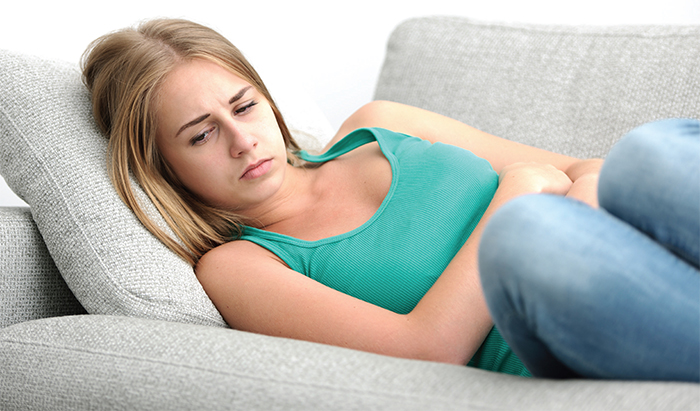The price of pain
In Conditions
Follow this topic
Bookmark
Record learning outcomes
Pain is something we've all experienced at some point, but what's it like to suffer every day?

Many people will know what it's like to have to cancel plans thanks to an annoying headache or aching muscles. Yet for the millions of Britons who suffer from pain every day, it is much more than just a minor inconvenience. Ongoing pain can have a major impact on a person's quality of life, affecting everything from their personal relationships to their work, and even heightening their risk of suffering mental illness.
According to the British Pain Society, daily pain affects around 10 million people in the UK, with growing evidence suggesting that women suffer more than men. The economic burden of pain is also huge, with research revealing that adolescent pain alone costs nearly £4 billion a year, amounting to £8,000 per teenager. The National Rheumatoid Arthritis Society also estimates that 9.4 million working days are lost through this condition alone.
Generally, pain can be defined as either chronic or acute. €Acute pain is pain that you'd expect following an injury, which should subside as it heals,€ explains Dr Austin Leach, consultant in pain medicine at the British Pain Society. €Chronic pain lasts longer than 12 weeks but many patients define it as 'bad pain' rather than longterm.€ Persistent pain can cause anxiety as sufferers wonder how long it will last and how it will interfere with their daily lives, as well as whether it could indicate a serious underlying condition.
Pain is difficult to describe, yet few people appreciate how a person's own perception of pain impacts the degree to which they suffer.€Pain is a sensory experience that always inevitably has an emotional response attached,€ explains Dr Leach. €An individual's perception of pain is an emotional experience based on the implications it will have on their life. There's also the use of memory to cross reference the past and present experience.€
Chronic pain is well established as a condition in its own right. However, many sufferers continue to feel misunderstood by their families and friends, as well as by healthcare professionals (HCPs). €Pain is an entirely unique experience,€ says Dr Leach. €If a patient says it's a problem then it's a genuine problem and the HCP is obliged to believe them. Patients may misinterpret their symptoms, which leads to HCP dismissal and that breaks down the trust between the patient and the HCP.€
A painful link
Worryingly, a link between pain and mental health conditions such as depression can be found in some people to varying degrees. According to the Mental Health Foundation, one in four people experience some form of mental health disorder each year, with mixed anxiety and depression being the most common disorder in the UK. And according to the American Pain Foundation, 65 per cent of depressed patients complain of pain. €If you suffer from depression, you're more likely to suffer from chronic pain problems and if you suffer from depression, pain is harder to treat,€ says Dr Leach.
The link between depression and chronic pain might be explained clinically, as they appear to share a neurological pathway. A 2003 teleconference on 'New Treatments for Depression Characterised by Physical Symptoms' described how the response to painful physical stimuli is moderated in the brain by the same neurotransmitters (chemicals that transmit signals in the brain) that affect mood. Therefore, patients with neurotransmitter disruption may suffer from both depression and pain.
However, just the impact of chronic pain on a sufferer's everyday life can affect their mood. €Continuing pain doesn't necessarily mean continuing damage, but the image in a sufferer's head colours their judgment for the future,€ says Dr Leach. €If you have a negative experience associated with a long-term symptom, then gradually that leads to a reduction in activity and enterprise. So, you have more time off sick, you lose your job, which reduces your self-esteem and affects how you're regarded.€
In less extreme cases, persistent daily pain can make sufferers reluctant to socialise, putting a strain on their relationships and causing them to miss out on gatherings that could have helped distract them from their suffering. €If somebody has recurrent back pain, they're going to be less willing to go down the pub and then their friends think they're a bore. Pain is very socially isolating and lonely,€ adds Dr Leach.
 Oral medication is one way of relieving pain, but some customers have concerns about drug dependency, medicines clashes and side effects
Oral medication is one way of relieving pain, but some customers have concerns about drug dependency, medicines clashes and side effects
Pain is very socially isolating and lonely
Moving forward
Pain is a complex condition that varies in its impact according to the sufferer's perception and the severity of the underlying cause, making it difficult to recommend the best treatment option.
According to Dr Leach, taking a patient-centred approach is critical: €Patients need to be as involved as the HCP in managing their condition. There's no treatment that's head and shoulders above the rest. HCPs should discuss the options and help the patients to decide. There are lots of strategies of the same efficacy, so it depends on the patient's requirements and willingness to stick to it efficiently.€
There are various treatment options available for pain management, including oral medication, topical products and non-medicinal therapies. Selecting the most appropriate treatment option may be trial and error for each sufferer. Concerns about drug dependency, medicine clashes and adverse side effects means many sufferers also consider nonmedicinal methods of managing their pain. €Non-medicinal treatments can sometimes be more effective than medication, particularly for muscular and joint pain,€ explains Dr Leach. Different options include:
- TENS therapy: a transcutaneous electrical nerve stimulation (TENS) machine is a small, battery-operated device that delivers an electric current to the affected area. This generates a tingling sensation that can block or suppress pain signals to the brain and stimulate endorphin production. They are not suitable for patients with pacemakers or other electrical implants
- Heat therapy: the heat emitted from a hot water bottle, bath or heat patch helps to dilate blood vessels, which stimulates blood circulation and reduces muscle spasms
- Cold therapy: e.g. applying ice or a cold-causing gel, patch or spray to the affected area makes the blood vessels on the surface of the skin widen so that there is a loss of heat, which helps to reduce the amount of pain that is felt. It is best to use cold therapy in the first 48-72 hours after an injury
- Massage: can relax the mind and body muscles.
How to self manage
- Exercise €“ everyday activities like walking can block pain signals to the brain
- Breathe €“ deep, slow breaths can prevent anxiety from worsening pain and help to relax tight muscles
- Distract yourself €“ take up an enjoyable hobby so pain isn't the only thing on your mind
- Sleep €“ sleep depravation can worsen pain, so stick to a normal bedtime routine and avoid naps during the day
- Socialise €“ invite friends round and talk about anything but the pain
- Relax €“ practice yoga or meditation
Which drug, when?
A pain-free lifestyle
Although pain sufferers were previously advised to rest as much as possible, inactivity can prolong pain and reduce mobility. €The idea of bed rest to treat pain is pre-1980s and it's really worrying that the message is still out there,€ says Dr Leach.
The benefits of regular exercise in relieving pain include:
- Reducing anxiety
- Easing muscle tension
- Aiding sleep
- Improving posture
- Increasing the range of joint movement
- Boosting endorphin release
€We know that having a physical illness can be a cause of mental health problems, so staying active, and therefore physically fit, can help maintain mental health too,€ says Beth Murphy, head of information at mental health charity Mind.
Encouraging customers to continue with their day-to-day activities as much as possible will ensure they don't become sedentary, while maintaining a routine may distract them from their pain.
Research suggests that Pilates can be effective in easing nonspecific lower back pain, while low impact exercise like yoga or fast walking can improve health and fitness without damaging joints. €Lying in bed is the wrong way to get better,€ adds Dr Leach. €Eat healthily and exercise for 30 minutes every day so that you perspire lightly and need to take a breath to finish a sentence.€
Maintaining a relaxed, positive outlook is critical, particularly as muscle tension caused by worrying can worsen symptoms. €You must have a positive mental attitude in pain management,€ says Dr Leach. €People feel bullied by their pain so relinquish responsibility and use it as an excuse to remain unhappy. Most of the time pain isn't fatal. It's called 'misery management' €“ getting people to understand that life is worthwhile and there are still goals to achieve. People who do best with pain accept it and go about reconstructing a framework.€
Pharmacies are ideally placed to support suffering customers, says Beth: €Pharmacies can be a great, underused resource. Pharmacists are specialists on medication and can answer questions about things like side effects and interactions with other medication. You can usually speak to a pharmacist straight away and they might have information for customers to take away.€
